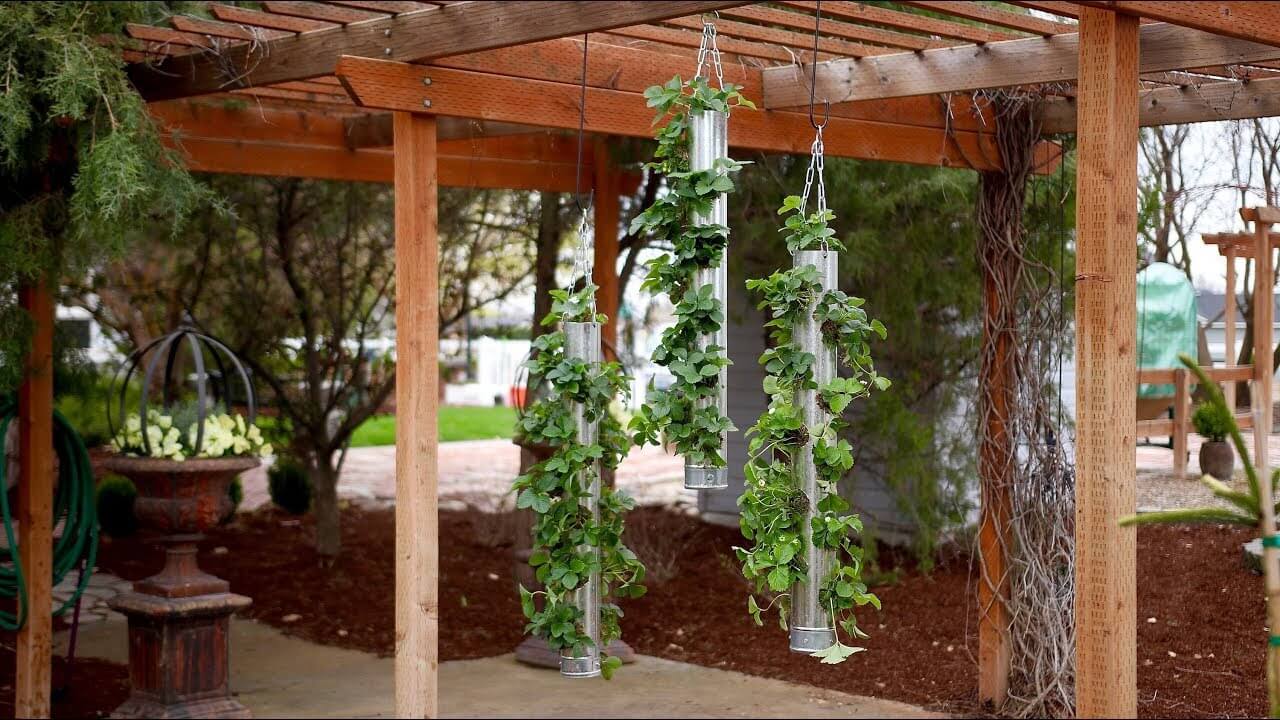The PVC pipe seed planter is a cost-effective and durable gardening solution that offers numerous advantages. Whether you’re a seasoned gardener or just starting out, this versatile tool can help you achieve successful seed germination and healthy plant growth.
PVC pipes, commonly used in plumbing, can be repurposed into seed planters due to their durability, resistance to rot and chemicals, and ability to withstand various weather conditions. They provide a controlled environment for seeds, allowing you to optimize germination rates and protect young seedlings from pests and diseases.
DIY PVC Pipe Seed Planter Designs

DIY PVC pipe seed planters offer a cost-effective and customizable solution for gardeners. These planters are easy to construct, requiring minimal materials and tools. Here are a few popular designs:
Simple PVC Pipe Seed Planter
This design is perfect for beginners. It involves cutting a PVC pipe into desired lengths, drilling holes for drainage, and attaching end caps. The pipes can be suspended horizontally or vertically, providing versatility in space utilization.
Multi-Tiered PVC Pipe Seed Planter
This design creates a vertical garden, maximizing space in small areas. It involves connecting multiple PVC pipes at different levels, allowing for the cultivation of various plant species with varying sunlight requirements.
Customized PVC Pipe Seed Planter
PVC pipes can be cut and shaped into unique designs, allowing gardeners to create planters that match their aesthetic preferences. They can be painted, decorated, or combined with other materials to create visually appealing and functional planters.
Advantages and Disadvantages of Using PVC Pipe Seed Planters
PVC pipe seed planters offer several advantages and disadvantages. Understanding these factors can help gardeners make informed decisions about whether to use them.
Benefits of Using PVC Pipe Seed Planters
- Cost-effectiveness: PVC pipes are relatively inexpensive, making them a budget-friendly option for seed planters.
- Durability: PVC is a durable material that can withstand outdoor conditions and regular use, ensuring longevity.
- Easy to customize: PVC pipes can be easily cut and shaped to create planters of various sizes and configurations, allowing for customization based on individual needs.
- Lightweight: PVC pipes are lightweight, making them easy to move and handle, even when filled with soil and seeds.
Drawbacks of Using PVC Pipe Seed Planters
- Potential for chemical leaching: Some PVC pipes may contain chemicals, such as bisphenol A (BPA), which can leach into the soil and potentially harm plants and the environment. It’s important to choose high-quality PVC pipes specifically designed for food contact to minimize this risk.
- Not biodegradable: PVC is not biodegradable, so it may accumulate in the environment if not disposed of properly.
- Can become brittle over time: While PVC is generally durable, it can become brittle over time, especially when exposed to sunlight or extreme temperatures.
Recommendations for Choosing High-Quality PVC Pipes for Seed Planters
To ensure the safety and effectiveness of PVC pipe seed planters, it’s recommended to choose high-quality pipes that meet the following criteria:
- Food-grade PVC: Look for PVC pipes labeled as “food-grade” or “NSF-approved” for food contact.
- Schedule 40 or 80 PVC: Choose PVC pipes with a schedule rating of 40 or 80, which indicates a thicker wall thickness and greater durability.
- Avoid recycled PVC: Recycled PVC may contain impurities or contaminants that could leach into the soil.
Best Practices for Using PVC Pipe Seed Planters

PVC pipe seed planters offer an efficient and cost-effective way to start seeds indoors. By following these best practices, you can optimize their effectiveness and ensure successful seed germination and seedling growth.
Soil Preparation, Pvc pipe seed planter
* Use a well-draining potting mix specifically designed for seed starting.
* Moisten the potting mix thoroughly before filling the PVC pipe planter.
* Ensure the soil is loose and free of clumps to facilitate proper root development.
Watering Techniques
* Water the seedlings regularly, but avoid overwatering.
* Allow the top inch of soil to dry out slightly before watering again.
* Use a spray bottle or a gentle watering can to avoid disturbing the delicate seedlings.
Spacing and Planting Seeds
* Follow the recommended spacing guidelines for the specific seeds you are planting.
* Plant seeds at the correct depth, as specified on the seed packet.
* Use a pencil or a thin stick to make small holes in the soil for seed placement.
Maintenance and Cleaning
* Regularly check the seedlings for pests or diseases and take appropriate measures to control them.
* Fertilize the seedlings lightly once they have developed their first set of true leaves.
* Clean the PVC pipe planter thoroughly after each use to prevent the buildup of pathogens. Use a mild bleach solution or a commercial cleaner designed for gardening tools.